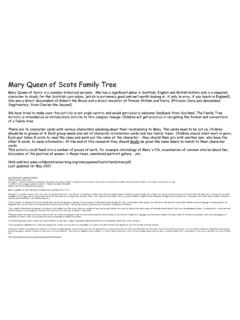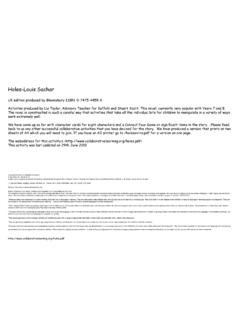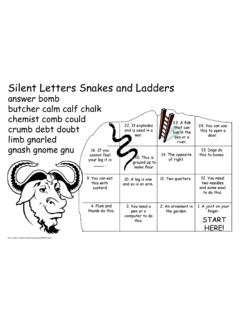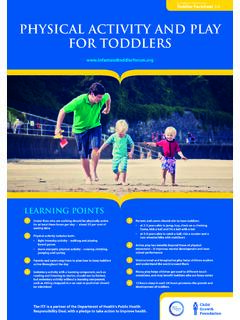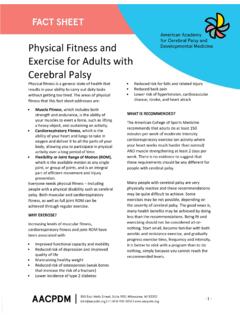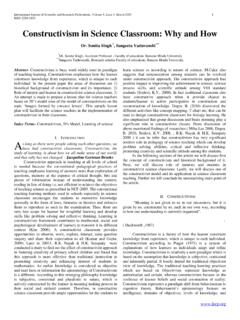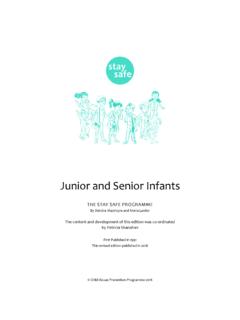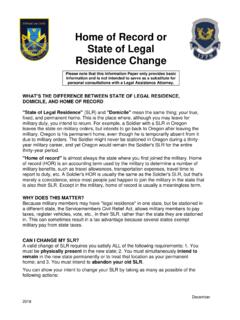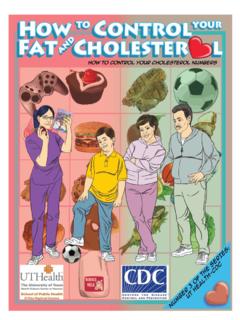Transcription of States of Matter Activities - Collaborative Learning
1 Of Matter ActivitiesWe have brought together a series of Activities for this topic which have been used extensively at different key Solids, Liquids and Gases from Steve Cooke and Alison Tidmarsh in Leicester City. A Connect Four activity that has been used from KS2 up. 2. Ditto from Claire Fletcher and colleagues in Hounslow, but this time a sorting and collecting card game. 3. Another Connect Four activity,which can also be a matching activity, for KS3 up from Rose Elgar in expect that these Activities will shortly be posted on their respective local websites and linked to the National Grid for Learning Inclusion Search webaddress for this activity is < >.
2 Last update 3rd August Learning PROJECTP roject Director: Stuart ScottSupporting a cooperative network of teaching professionals throughout the European Union to develop and disseminate accessible teaching materials in all subject areas and for all , Barford Street, Islington, London N1 0QB UK Phone: 0044 (0)20 7226 8885 Fax: 0044 (0)20 7704 1350 Website: BRIEF SUMMARY OF BASIC PRINCIPLES BEHIND OUR TEACHING Activities :The project is a teacher network, and a non-profit making educational trust. Our main aim is to develop and disseminate classroom tested examples of effective group strategies across all phases and subjects.
3 We hope they will inspire you to use similar strategies in other topics and curriculum areas. We run teacher workshops, swapshops and conferences throughout the European Union. The project publishes a catalogue of Activities plus lists in selected subject areas, and a newsletter available by post or internet: PAPERCLIP . *These Activities were influenced by current thinking about the role of language in Learning . They are designed to help children learn through talk and active Learning in small groups. They work best in mixed classes where children in need of language or Learning support are integrated.
4 They are well suited for the development of speaking and listening . They provide teachers opportunities for assessment of speaking and listening and other formative assessment.*They support differentiation by placing a high value on what children can offer to each other on a particular topic, and also give children the chance to respect each other s views and formulate shared opinions which they can disseminate to peers. By helping them to take ideas and abstract concepts, discuss, paraphrase and move them about physically , they help to develop thinking skills.
5 *They give children the opportunity to participate in their own words and language in their own time without pressure. Many Activities can be tried out in mother tongue and afterwards in English. A growing number of Activities are available in more than one language, not translated, but mixed, so that you may need more than one language to complete the activity.*They encourage study skills in context, and should therefore be used with a range of appropriate information books which are preferably within reach in the classroom.
6 *They are generally adaptable over a wide age range because children can bring their own knowledge to an activity and refer to books at an appropriate level. The Activities work like catalysts.*All project Activities were planned and developed by teachers working together, and the main reason they are disseminated is to encourage teachers to work effectively with each other inside and outside the classroom. They have made it possible for mainstream and language and Learning support teachers to share an equal role in curriculum delivery.
7 They should be adapted to local conditions. In order to help us keep pace with curriculum changes, please send any new or revised Activities back to the project, so that we can add them to our lists of Liquids and Gases Card GameA card game for 3 players or 3 groups of : You must try and collect all the cards which describe the state (solid, liquid or gas) shown on your picture Short are three picture cards. Place them face down on the Each player/group picks a picture Shuffle the other cards and spread them face up on the table.
8 4. Take it in turns to pick a card. If it describes your picture card, keep it. If not, you must give it to the player who needs it!5. The game continues until all the players have completed their Longer rule 5 with: If the statement describes your picture keep it. If not, put it back on the table face Liquids and Gases Picture Card Game A SolidA LiquidA need to print the pictures above and the statements below on card and cut them out. You might want to make the activity easier by writing 'solid' liquid' 'gas' on the back of every or just a few statements so that guesses can be checked by turning the card over.
9 We have provided a template for the last set of statements so you just have to fold the page in half and stick it together before you cut out the , Liquids and Gases Picture Card GameWe can't feel particles move fills any container you put it flows from one container to particles move slowly does not have a fixed volume or spreads to fill the bottom of a spreads out in all has a fixed shape and particles have some movement energyIt stays in one It has a fixed volume, but it changes particles are spread far particles are fairly close particles are packed close particles have a lot of movement particles do not attract each particles attract each other particles attract each other particles are not in a pattern.
10 Liquids and Gases Picture Card GameThe particles have almost no movement energyThe particles have a weak particles are in a fixed is usually keeps its own is stays in a feels is particles are in a fixed you fold this page in half the statements match descriptions. Liquids and Gases Card GameExtension Activity Now look at all the cards for solids and try to sort them into two which describewhat we find by observingsolids, liquids and which describe howthe 'particle theory'explains these in your group write a paragraph about the three States of Matter .

